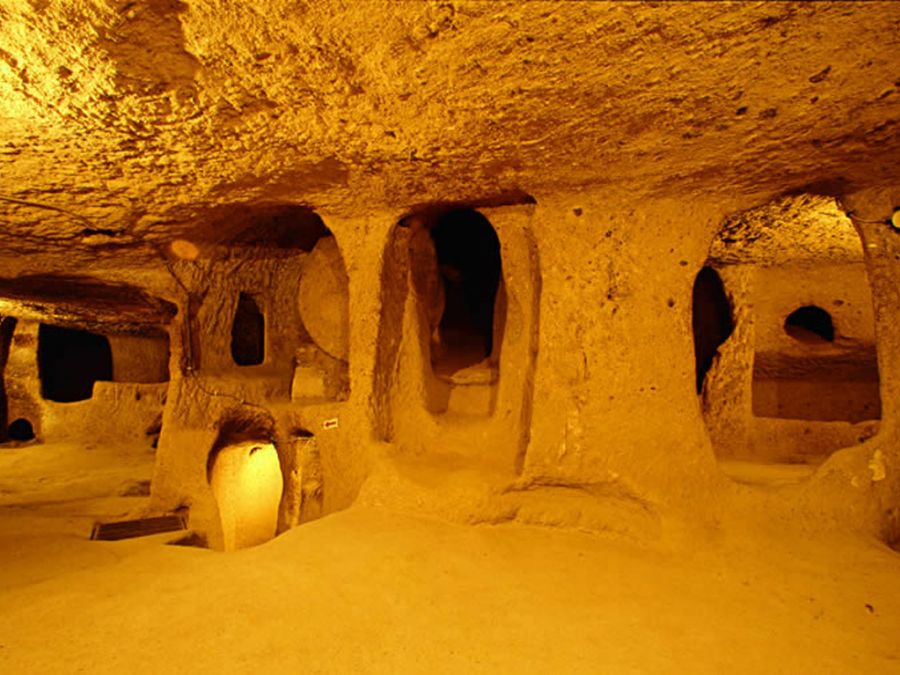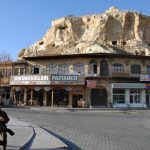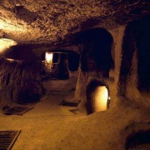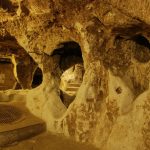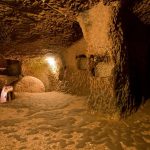The Museums of Nevsehir and Cappadocia Underground Cities,
The first steps to establish a museum in Nevsehir, which is in the Central Anatolian region of Cappadocia and the site of the Rock Churches, were taken when archaeological and ethnographic works were stored in the Damad Ibrahim Pasha Library. Later on, in 1965 the Imaret (soup kitchen) building of the Damad Ibrahim Pasha Kulliye was repaired and turned into a museum which was opened to the public in 1967.
Nevsehir Museum:
The Nevsehir Archaeological and Ethnographic Museum is housed in the Imaret building which was built by Sadrazam Damad Ibrahim Pasha at the beginning of the XVIII century. It has three rooms which are arranged as follows.
The room I: This room contains photographs of architectural works and clothing from the XVIII century, miniatures depicting scenes from palace life, manuscript books, and writing sets.
The Room II: This room contains archaeological works. These include prehistoric axes and earthenware dishes, Hittite pottery, Phrygian fibulas and ornaments, Byzantine bracelets and mother of pearl pictures of Jesus, and various objects from the Roman period.
The Room III: This room contains ethnographic works and examples of hand craftsmanship. Among them are porcelain and tiles, dishes, console gas lamps, clothing from the Ottoman period, bows and arrows, weapons, kitchen utensils, and jewelry. Exhibited in the garden of the Museum are large water jars from the Byzantine period, mill stones and inscriptions, grave steles, sacrificial altars and building stones from various periods.
Urgup Museum:
Archaeological and ethnographic works from the region of Urgup were at first exhibited in the Peoples Library from 1965 until 1971 when the new museum building constructed in Urgup was opened and the works exhibited there. The works in the museum can be divided into two groups: One archaeological containing Prehistoric ceramics, and dishes, figurines, lamps, steles, statues, metal and glass objects and ornaments from the Hittite, Phrygian, Roman, and Byzantine periods, and one group ethnographical containing clothes, embroidery, tapestries, jewelry, manuscripts, and weapons. Stone works and clay water jars are exhibited in the Museum garden.
Cappadocia Underground Cities:
During the incursions of the Moslem Arabs which began in the VII century during the Byzantine period, the Christians living in Cappadocia were from time to time obliged to hide in underground dwellings. The most important of these underground cities were opened up after 1965, cleaned out, lit up and opened as museums. The most important of these are those at Kaymakli 201km. south of Nevsehir, and at Derinkuyu 48 km. from Nevsehir. Both of them have rooms on five levels linked by labyrinthine paths. There are also underground cities at Avanos, Ozkonak, Cardak, Karacaoren, and Mucur.

